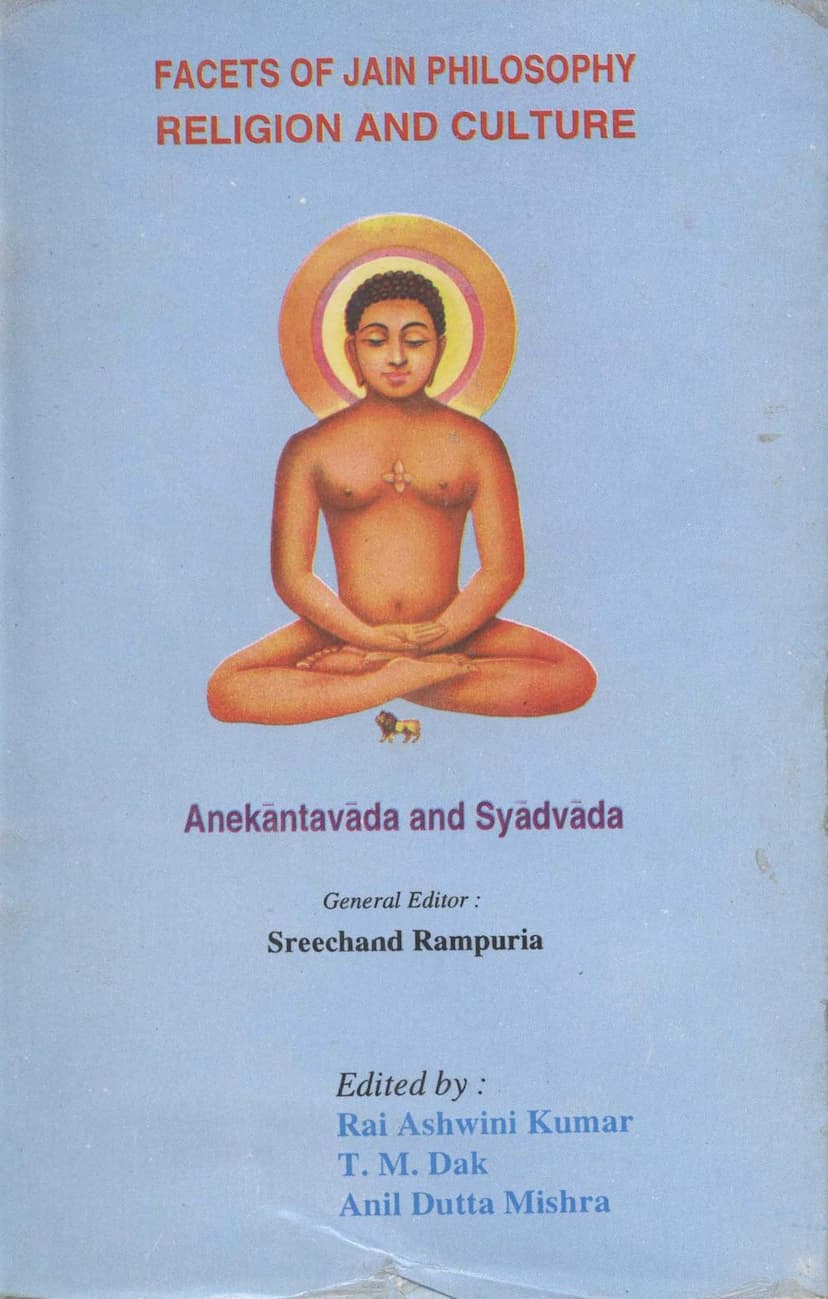Facets Of Jain Philosophy Religion And Culture
Added to library: September 1, 2025

Summary
Here's a comprehensive summary of the provided Jain text "Facets of Jain Philosophy Religion and Culture," specifically focusing on Anekāntavāda and Syādvāda, based on the provided pages:
Core Concepts: Anekāntavāda and Syādvāda
The book "Facets of Jain Philosophy Religion and Culture," edited by Shreechand Rampuria, Rai Ashwini Kumar, T.M. Dak, and Anil Dutta Mishra, and published by Jain Vishva Bharati Institute, is a collection of scholarly articles aiming to present various aspects of Jainism. The initial volumes focus on Anekāntavāda and Syādvāda, considered foundational to Jain philosophy.
Anekāntavāda (Non-Absolutism / Many-Sidedness of Reality)
- Central Tenet: Anekāntavāda is the cornerstone of Jain philosophical thinking. It posits that reality is inherently multi-faceted, possessing infinite characteristics that can appear contradictory from different viewpoints. The true nature of reality is an integrated whole of these infinite qualities.
- Rejection of Absolutism: It rejects absolute or one-sided viewpoints about reality. Anekāntavāda cautions against closed philosophical systems and encourages a relativistic approach, harmonizing seemingly contradictory standpoints.
- Key Axioms: The text outlines four fundamental axioms of non-absolutism:
- Concomitance of the Universal and the Particular: Neither the universal (substance) nor the particular (modes) can exist or be conceived without the other.
- Concomitance of the Permanent and the Impermanent: Both permanence (substance) and impermanence (modes) are equally true and relative aspects of reality, shared by both spiritual and material realms.
- Concomitance of Existence and Non-Existence: Every real possesses an infinite number of mutually opposed attributes, including existence and non-existence, which co-exist. Affirmation without negation and vice versa is impossible. Existence pertains to intrinsic nature, non-existence to extrinsic nature.
- Concomitance of the Speakable and the Unspeakable: Due to the infinite attributes of reality, it's impossible to express all of them linguistically. Only a limited number can be spoken of.
- Synthetic Approach: Anekāntavāda promotes reconciliation by pointing to the essential interrelatedness of different views and harmonizing them. It fosters a spirit of tolerance and appreciation for diverse viewpoints, contributing to peace and democracy.
- Foundation for Other Doctrines: It underpins Nayavāda (theory of partial truths/standpoints) and Syādvāda (theory of conditional predication).
- Scope: Anekāntavāda is a dynamic philosophy that touches almost every aspect of life—social, ethical, psychological, ontological, and metaphysical—offering an integral, balanced, and effective approach to modern problems and potentially leading to the emergence of a "new man."
Syādvāda (Relativism / Conditional Dialectic)
- Purpose: Syādvāda is the logical and epistemological tool through which Anekāntavāda unfolds its vision. It provides a method to express the multi-faceted nature of reality without falling into absolutism or contradiction.
- Meaning of "Syāt": The term "syāt" is crucial. While it can have various grammatical and philosophical meanings, in Syādvāda it primarily denotes multiplicity, multiple character (anekānta), relativity, or "in some respect" / "from a certain point of view." It is not used to express doubt, but rather the conditional nature of truth.
- Relation to Nayavāda: Nayavāda is the analytical method of examining reality from specific standpoints, revealing partial truths. Syādvāda is the synthetical method that harmonizes these partial truths derived from different nayas, leading to a comprehensive understanding. Nayavāda provides the individual jewels, and Syādvāda weaves them into a necklace.
- The Sevenfold Predication (Saptabhaṅgī): Syādvāda is most famously represented by the Saptabhaṅgī, a system of seven propositions that systematically explore the possible predication of attributes about a reality. These propositions are built upon three fundamental concepts:
- Asti (Is): Affirmation of existence in a specific context.
- Nāsti (Is Not): Negation of existence in another specific context.
- Avaktavya (Indescribable): The synthesis of being and non-being simultaneously, or aspects that transcend singular conceptualization. The remaining four propositions are combinations of these three.
- Conditional Truth: Each proposition in the Saptabhaṅgī is prefixed with "syāt," emphasizing that the statement is true only conditionally, relative to a particular standpoint, context, or aspect. Absolute or categorical predication is rejected.
- Reconciliation of Opposites: Syādvāda demonstrates how apparently contradictory attributes (like existence and non-existence, permanence and impermanence, one and many) can co-exist in reality without contradiction when viewed from different relative standpoints.
- Modern Parallels: The text draws parallels between Syādvāda and modern scientific concepts like the Theory of Relativity (Einstein) and the principle of complementarity (Bohr), highlighting the shared emphasis on the relativity of knowledge and the multi-faceted nature of reality. However, it also notes key differences, particularly regarding the inherent uncertainty in Bohr's ideas compared to the relative certainty within each standpoint in Syādvāda.
- Addressing Criticisms: The book acknowledges and discusses criticisms of Syādvāda, such as charges of eclecticism, scepticism, and self-contradiction. It argues that these criticisms stem from a misunderstanding of the doctrine, particularly regarding the nature of relative truth, the synthesis of opposites, and the function of "syāt" and "eva."
Overall Aim of the Collection:
The project aims to make Jain literature and thought more accessible by compiling scholarly articles on various aspects of Jainism, addressing a lack of comprehensive awareness among scholars. This first volume, focusing on Anekāntavāda and Syādvāda, is intended for an English-speaking audience, especially those abroad, to understand the core concepts of Jain philosophy. The editors express hope that this work will stimulate deeper understanding and contribute to peace and tolerance by highlighting the relevance of Anekāntavāda in contemporary conflicts.